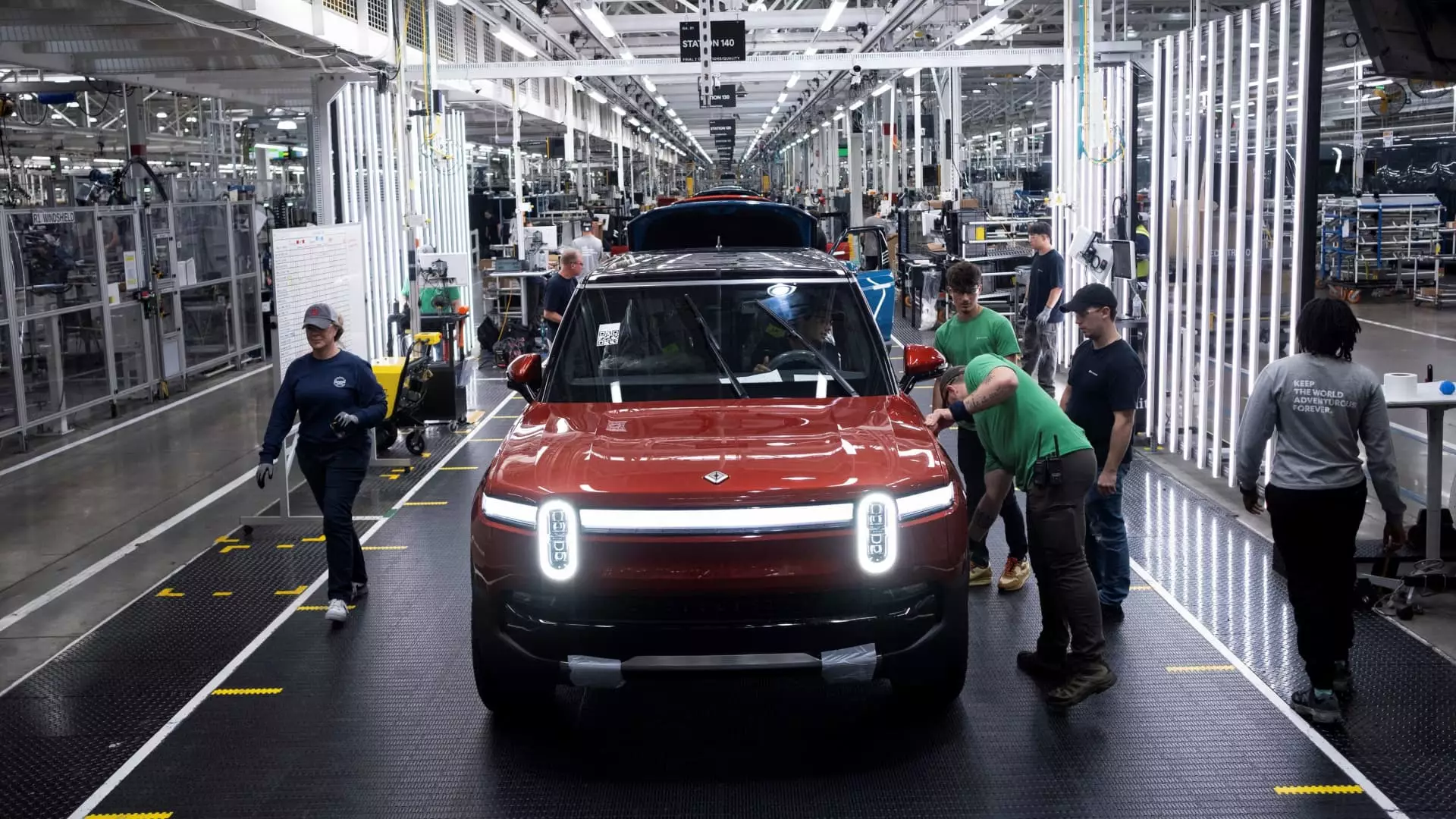Rivian Automotive, the electric vehicle startup that has garnered substantial attention in the rapidly evolving automotive landscape, faced a significant setback recently. On Friday morning, the company’s shares plummeted about 4% after revealing disappointing third-quarter delivery numbers—an outcome that fell short of analyst expectations. The company produced 13,157 vehicles but only managed to deliver 10,018 units, while market analysts had forecasted around 13,000 deliveries, underscoring a pronounced shortfall.
This production discrepancy raises critical questions about the company’s operational efficiency and its ability to keep pace with the competitive electric vehicle market. Rivian’s announcement of reduced annual production guidance—from an anticipated 57,000 units down to a range of 47,000 to 49,000—highlights the fragility of supply chains in the modern automotive industry, particularly for a company still ramping up its production capabilities.
Supply Chain Woes: A Deeper Look
The heart of Rivian’s production troubles has been attributed to a shortage of a key component used in its R1 vehicles and commercial vans. As identified in the company’s statements, this disruption has worsened in recent weeks and significantly hampered production efforts. Rivian’s spokesman underscored that the problematic component is integral to the company’s in-house motors, although specifics were not divulged. This lack of transparency can lead to skepticism among investors and raises red flags regarding Rivian’s supply chain management practices.
CEO RJ Scaringe’s remarks at a Morgan Stanley investor conference pointed to broader challenges involving multiple suppliers, suggesting that Rivian’s current dilemmas are not isolated incidents but symptomatic of larger structural vulnerabilities within its supply chain. With EV production relying heavily on complex multi-tiered suppliers, the ramifications of these challenges could extend well beyond Rivian, affecting its competitive standing against industry giants like Tesla and GM.
Future Outlook and Market Reaction
Despite these significant obstacles, Rivian continues to project low single-digit growth in deliveries compared to its 2023 performance, which is projected to be between 50,500 and 52,000 vehicles. This cautious optimism could be perceived as a stabilizing factor in a turbulent market, but the reality is that Rivian’s stock has declined over 50% in 2024. This decline mirrors broader industry trends, where expectations of EV demand have not materialized as rapidly as anticipated.
The current economic climate, coupled with cash burn concerns, points to a potential recalibration among investors keen to gauge Rivian’s long-term viability. As production hurdles persist, Rivian must not only navigate its immediate challenges but also address investor anxiety surrounding its financial health and sustainability in a crowded EV market.
Rivian’s recent performance and struggles shine a spotlight on the complexities of scaling production in the electric vehicle industry. As it seeks to navigate these challenges, the company will need to bolster its supply chain, enhance transparency, and maintain open communication with stakeholders. The future is uncertain, but Rivian’s approach to overcoming these obstacles will be critical in determining its trajectory in the competitive world of electric vehicles. Investors, consumers, and industry watchers alike will be closely monitoring how Rivian adapts to these challenges and positions itself for growth in the coming years.

